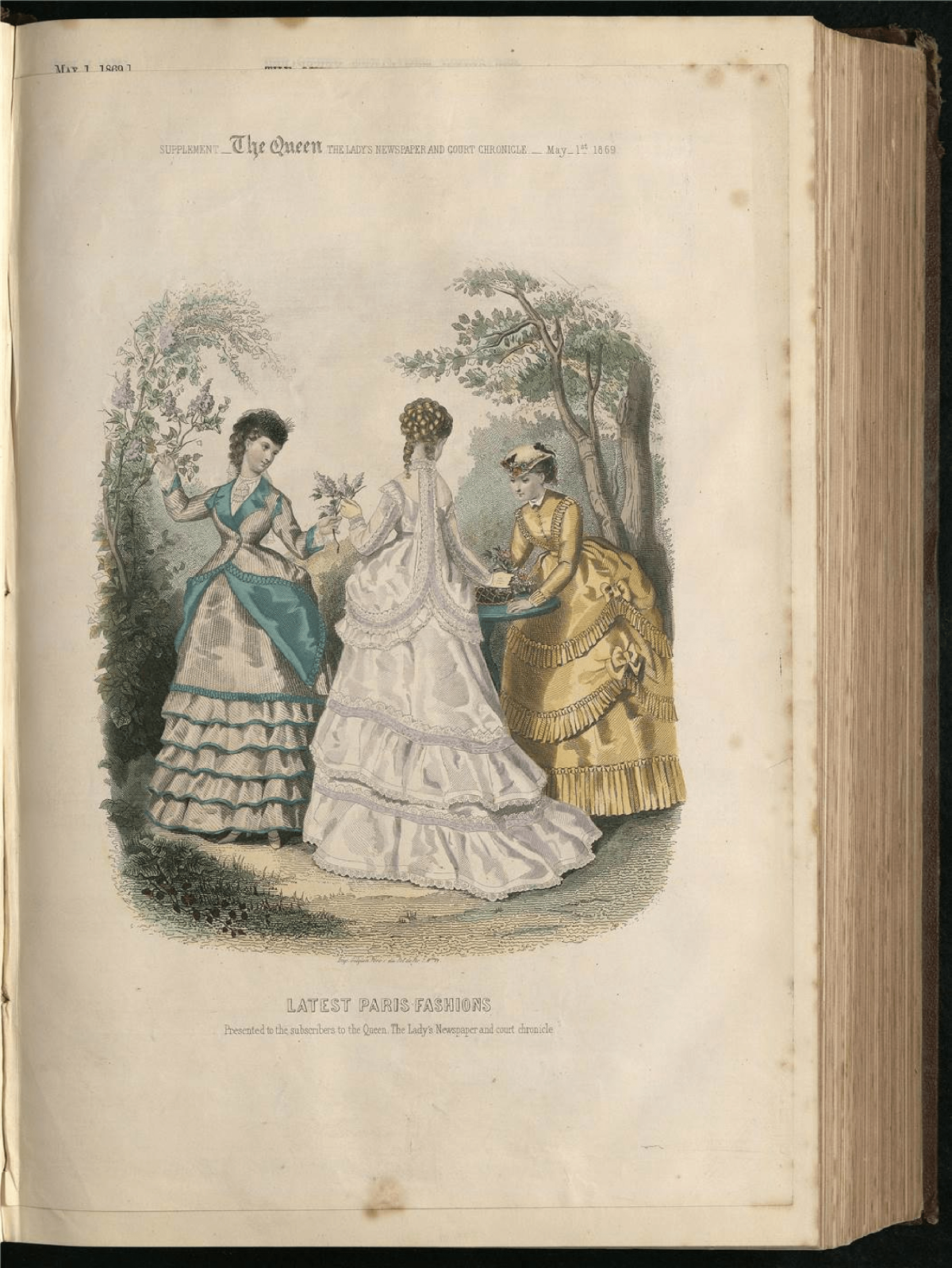Phyllis’ Commentary:
I have received so many compliments lately, I am not used to this, the shop has allowed me to meet so many unique people that I could not imagine to happen so easily in my old life. I suppose there are always upsides to something that seems unconventional. My sister’s have told me I am growing into a woman, but what a strange time to navigate this! We have been invited to so many events and Sidney Darrell’s exhibitions have required me to frequently dress up for these occasions . But if I am to be his muse I can not turn down his invites, supporting his art is the least I can do.The nice thing about these events is that they distract me from boring everyday life, I have been feeling a bit under the weather lately but these events act as a nice distraction. I have been told that simplicity suits me well, I really do admire the dress in the center of this illustration. This image came from a catalogue that my sister’s told me our mother enjoyed. While I did not really have the opportunity to know my mother as she passed when I was a baby, I have found enjoyment in learning pieces of her personality through the momentos we have saved. Lucy informed me that our mother, from her brief memory, looks a bit like me, and as I grow more similar traits have arisen, reviving brief distant memories. Much of the female figures I have grown up around consist of my sisters, and their friends like Constance Devonshire or our aunt Caroline,who do not particularly seem to take inspiration from catalogues like these, probably believing these styles are old fashioned. However myself and my sister’s have noticed that simple pieces encompass a timeless beauty on me. Before the passing of our father I have not really had the opportunity to dress like a woman but now in presence of the opportunity I feel drawn to this particular style. The monotone color allows for an elegant piece that is not too flashy and the flow is perfect for portraying a simple womanly figure. I hope to style my hair and jewelry effectively, it is important for not any one of the components to take away from each other.
Editorial Commentary:
Phyllis is the youngest Lormier sister and has noted that she was remarked considerably often for her beauty. Much of Victorian fashion of this time was elaborate and used as a display of wealth. People in her life like Constance Devonshire and their aunt Caroline likely participated in this trend of fashion , which was characterized as flashy but also overwhelming. Phyllis took inspiration from an older catalogue from a few decades before her era, but still found praise in her time. These stylistic choices likely allowed her to stand out in the presence of wealthy individuals especially at banquets and art exhibitions whose attendees are of prestigious class. This contributes to the idea that money is not everything especially when Phyllis could both stand out and stand within the wealthy, receiving attention for her uniqueness in styling timeless fashion. Since much of Phyllis’ provided detail when describing what others have said to her deals with her appearance, in the perspective of a researching audience we are able to perceive the idea that she was extremely beautiful and additionally understand how her natural aura and stylistic choices also allowed her to receive attention without much extravagant effort. Stylistically we can see fashion trends from the Victorian Era and onward begin to phase out elaborate clothing. Phyllis also being able to stand out and stand within the wealthy highlights the beginning of how the previous society’s indications/displays of wealth are beginning to feign and mix into other classes. This can be attributed to the growing middle class, and The Romance Of a Shop, deals with the sister’s transitioning into this lifestyle.
Citations:
McGuirk, Hayley. “The Rebel: A Visual Representation of First-Wave Feminism in the Work of Frances Benjamin Johnston.” Women's Studies, vol. 48, no. 5, 2019, pp. 475–497., doi:10.1080/00497878.2019.1628760.
Saeed, Nadia, et al. “Thomas Hardy: A Torchbearer of Feminism Representing Sufferings of Victorian Era Women.” International Journal of Applied Linguistics and English Literature, vol. 9, no. 3, 2020, p. 55., doi:10.7575/aiac.ijalel.v.9n.3p.55.
Latest Paris Fashions, 1869, 20 March 1869 - 30 December 1871, © Mary Evans Picture Library


